Can the movement of celestial bodies really determine our destinies? For centuries, humans have been captivated by the mysterious art of horoscopes, seeking guidance and insights into their lives. From ancient civilizations to modern times, the evolution of horoscopes has been a fascinating journey. In this article, we will explore the origins of ancient horoscopes and how they developed over time. We will dive into the influence of key figures like Ptolemy in the medieval and Renaissance period, as well as the rise of horoscope publications in the 18th to early 20th century. Finally, we will examine the impact of technology on contemporary horoscopes and the popularity of personalized readings. Join us on this exploration of how the stars have shaped our understanding of ourselves and our place in the universe.
Contents
- Ancient Horoscopes
- Medieval and Renaissance Period
- 18th to Early 20th Century
- Contemporary Horoscopes
- Conclusion
-
Frequently Asked Questions
- What is the earliest known record of horoscopes?
- Were horoscopes a part of religious practices in ancient civilizations?
- Did all ancient civilizations have their own unique astrological systems?
- Who was Ptolemy and how did he influence astrology?
- When did horoscope publications become popular?
- How were modern zodiac signs established?
- How has technology impacted contemporary horoscopes?
- Why are personalized horoscope readings popular?
- Can horoscopes accurately predict the future?
- What are some common misconceptions about horoscopes?
- References
-
Frequently Asked Questions
- What is the purpose of horoscopes?
- Can horoscopes accurately predict the future?
- How do ancient civilizations contribute to the evolution of horoscopes?
- Who was Ptolemy and why was he influential in horoscope development?
- What led to the rise of horoscope publications in the 18th century?
- How were modern zodiac signs born?
- What impact has technology had on contemporary horoscopes?
- Why are personalized horoscope readings trending?
- Is there a scientific basis for horoscopes?
- Can horoscopes be used as a tool for self-reflection?
- References
- Read More
Ancient Horoscopes
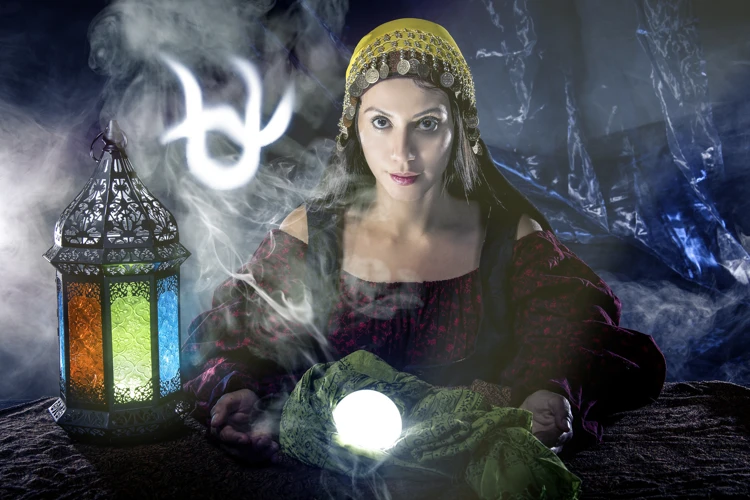
The ancient horoscopes, steeped in age-old wisdom and mysticism, have their origins shrouded in the mists of time. Scholars believe that the practice of astrology and horoscope reading can be traced back to ancient Mesopotamia, where celestial observations were made to predict the fortunes of individuals and civilizations. The Babylonians refined this art, introducing the concept of zodiac signs and establishing the foundation for horoscope interpretation. From there, the Greeks embraced astrology, with notable figures like Ptolemy contributing to its development. In ancient Egypt, astrology was intricately linked to religious beliefs, as the pharaohs placed great importance on aligning their rule with the cosmos. The Chinese, Mayans, and Aztecs also had their own astrological systems, incorporating unique symbolism and cultural influences. Each civilization brought its own perspective and interpretation to the understanding of the stars, shaping the foundations of ancient horoscopes. As we delve further into this topic, we will explore the rich tapestry of astrology in ancient civilizations and delve into the fascinating stories behind it.
Origin and Early Development
The origin and early development of horoscopes can be traced back to ancient civilizations that were fascinated by the celestial bodies and their potential influence on human lives. In Mesopotamia, the birthplace of astrology, priests and scholars diligently observed the movements of the sun, moon, and planets, believing that they held the key to predicting future events and understanding individual destinies. Their observations and interpretations formed the basis of the earliest horoscopes, which were primarily focused on agricultural and meteorological predictions. Gradually, these early horoscopes expanded to encompass a broader range of human experiences, including love, health, and success.
The Babylonians, renowned for their advanced astronomical knowledge, introduced the zodiac – a band of the sky divided into twelve equal parts, each associated with specific constellations. This laid the groundwork for the zodiac signs we recognize today. The concept of astrology and horoscope reading began to gain prominence and influence as it spread to ancient Greece. Renowned astronomer and astrologer Ptolemy’s treatise “Tetrabiblos” further codified astrological principles, emphasizing the importance of planetary positions and their influence on human lives. Astrology also played a significant role in ancient Egypt, where Pharaohs sought to align their rule with celestial forces.
Across different ancient civilizations, astrology took on unique cultural and mythological nuances. The Chinese developed their own zodiac system with animal symbols, while the Mayans and Aztecs integrated astrology into their religious and ritualistic practices. These rich and diverse ancient civilizations contributed to the evolution and refinement of horoscopes as a means of understanding and predicting human fortunes.
As astrology continued to develop, it became increasingly intertwined with societal and personal aspects of life. Ancient horoscopes were not only used for guidance but also influenced decision-making processes, such as selecting auspicious dates for important events or determining the compatibility between individuals. The origin and early development of horoscopes laid the foundation for the intricate web of beliefs and practices that continue to captivate and intrigue us today, as we seek to uncover the mysteries of the universe and our place within it.
Astrology in Ancient Civilizations
Astrology in ancient civilizations was an integral part of their belief systems and cultural practices. In Mesopotamia, the Babylonians utilized celestial observations to predict the fate of individuals and empires. They developed an intricate system of interpretation based on the positions of celestial bodies, paving the way for the modern zodiac. The ancient Greeks, influenced by Babylonian astrology, further expanded the field with philosophical interpretations and their own mythological pantheon. Notably, Ptolemy’s “Tetrabiblos” became a significant astrological treatise in the Western world during the Hellenistic period. The Egyptians, on the other hand, associated astrology with their beliefs in the afterlife and the divine nature of pharaohs. The alignment of stars and planets held great importance for them, as they believed it influenced the destiny of their rulers. In China, astrology focused on the five elements and yin and yang, blending astronomy with philosophy to provide guidance and understanding. The Mayans and Aztecs incorporated astrology into their complex calendars, determining auspicious dates for various activities. The connections between celestial events and earthly affairs were deeply ingrained in ancient civilizations, shaping their societies and spiritual beliefs. By exploring the astrology of these cultures, we can gain insights into the intricate web of mythology, spirituality, and divination that infused their lives.
Medieval and Renaissance Period
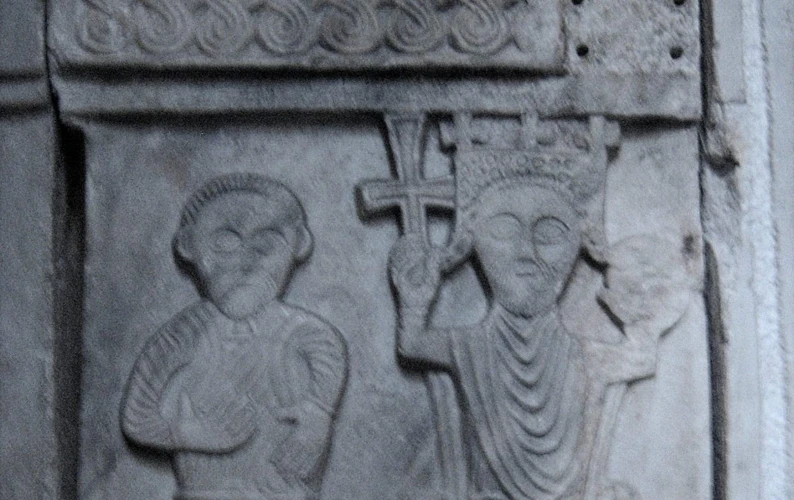
The medieval and Renaissance period marked a pivotal time in the evolution of horoscopes, as astrology experienced a resurgence in popularity and scholarly attention. The influential work of Claudius Ptolemy, an ancient Greek astronomer and mathematician, became a cornerstone of astrological understanding during this era. Ptolemy’s treatise “Tetrabiblos” laid out the principles of astrology, emphasizing the significance of stars and celestial bodies in shaping individual destinies. Astrologers of the time focused on the precise calculation of planetary positions and their effects on human lives. This renewed emphasis on the stars gave rise to detailed birth charts and horoscope interpretation that helped individuals gain insights into their character traits and potential future outcomes. The medieval and Renaissance period also witnessed a flourishing of astrological art and symbolism, as beautifully illustrated zodiac-themed manuscripts and celestial maps were created. This period, characterized by a fusion of scientific inquiry and mystical beliefs, played a crucial role in shaping the trajectory of horoscope development. As we explore further, we will dive deeper into the influence of Ptolemy and the captivating world of astrology during this time.
The Influence of Ptolemy
The influence of Ptolemy, a prominent figure in the ancient world, was immeasurable in shaping the course of astrology and horoscope interpretation. Ptolemy, a Greek philosopher, mathematician, and astronomer, lived in the 2nd century AD and his works became pivotal in advancing astrology. His treatise, known as the “Tetrabiblos,” provided a comprehensive guide to astrology, covering various aspects of horoscope reading and interpretation. Ptolemy emphasized the importance of using exact birth times for accurate predictions and developed the concept of astrological houses, which divided the zodiac into twelve sections representing different areas of an individual’s life. This innovation allowed for more precise and detailed horoscope readings. Ptolemy’s teachings bolstered the credibility of astrology and ensured its continued influence for centuries to come. While his ideas were not without criticism, Ptolemy’s impact on astrology cannot be overstated, as his teachings formed the basis for horoscope interpretation practices that are still followed to this day. To learn more about astrological houses and their role in predicting the future, click here: /astrological-houses-predicting-future/.
Placing an Emphasis on Stars and Celestial Bodies
In the medieval and Renaissance period, astrology took on a new level of complexity and sophistication. Astrologers placed a significant emphasis on studying the stars and celestial bodies to gain deeper insights into human behavior and the events that shaped society. They believed that the positions and movements of the planets, stars, and other celestial entities held profound influence over human lives.
Astrologers during this time focused on creating intricate charts and maps, mapping the positions of various celestial bodies at the time of a person’s birth. These charts, known as natal charts or birth charts, provided a detailed snapshot of the planetary positions and their relationships to one another. Each planet was associated with specific qualities and characteristics that were believed to influence different aspects of an individual’s life, such as personality traits, career, relationships, and health. The positioning of celestial bodies in different astrological houses also played a crucial role in determining the areas of life that would be influenced the most.
Along with the study of planets, astrologers took into consideration the influence of stars and constellations on human fate. The fixed stars, which appeared to maintain a relatively fixed position in the night sky, were assigned specific meanings and interpretations. These stars were often associated with particular qualities or events, and their alignments with planets were closely observed for predictive purposes.
One important figure who contributed significantly to the understanding of stars and celestial bodies was Claudius Ptolemy, a Greek astronomer and astrologer. Ptolemy developed a geocentric model of the universe, in which the Earth was believed to be at the center, with the planets and stars revolving around it. His work, “Tetrabiblos,” became one of the cornerstone texts of astrology during this period and influenced astrologers for centuries to come.
The emphasis on stars and celestial bodies during the medieval and Renaissance period introduced a greater level of complexity and precision to astrology. Astrologers meticulously studied the positions and movements of these celestial entities, believing that they held the keys to unlocking the mysteries of human destiny. The intricate charts and interpretations created during this time laid the groundwork for modern astrology and its continued fascination with the influence of the cosmos on our lives.
18th to Early 20th Century
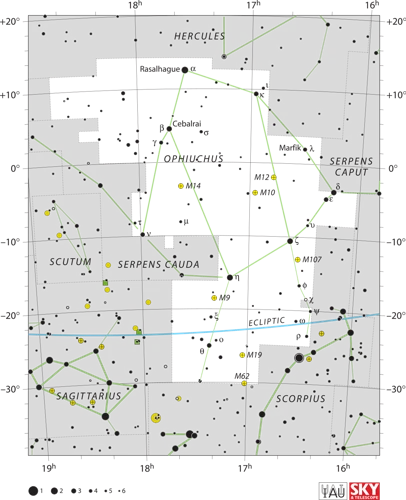
The 18th to early 20th century marked a significant period in the evolution of horoscopes, as astrology became more accessible to the masses. With the advancements in technology and the printing press, horoscope publications began to emerge, catering to a wider audience eager to uncover celestial insights. These publications, often found in newspapers and magazines, introduced people to their sun signs and provided general predictions based on their birth date. This period also witnessed the birth of the modern zodiac signs, with the inclusion of the thirteenth constellation, Ophiuchus. Ophiuchus, also known as the “Snake Bearer,” adds an extra layer of complexity to astrological interpretation. While controversial and not universally recognized, the inclusion of Ophiuchus sparked discussions and expanded the horizons of traditional astrology. As horoscope publications gained popularity, more individuals started seeking personalized readings to gain deeper insight into their lives, personality traits, and relationships. This era laid the groundwork for the thriving horoscope culture we see today, where personalized readings and daily predictions are easily accessible to anyone with an internet connection.
The Rise of Horoscope Publications
In the 18th century, a new phenomenon emerged that would forever change the world of horoscopes – the rise of horoscope publications. This marked a significant shift in how astrological predictions were disseminated and consumed by the public. With the printing press revolutionizing the spread of information, astrologers and enthusiasts seized the opportunity to publish horoscopes in newspapers, almanacs, and magazines. These publications reached a wider audience, allowing people from all walks of life to access their horoscope forecasts. The popularity of horoscope newspapers skyrocketed, as people eagerly turned to their daily or weekly predictions to gain insights into their love life, career prospects, and overall well-being. Astrologers began crafting engaging narratives and advice tailored to each zodiac sign, captivating readers with gripping horoscope columns. The accessibility and widespread availability of horoscope publications democratized astrology to a large extent, making it a common topic of conversation and curiosity. As the 19th century progressed, horoscope publications continued to evolve, adopting more modern formats and catering to specific niche interests such as love horoscopes, financial predictions, and compatibility assessments. The rise of horoscope publications opened up a new dimension in astrology, making it a cultural phenomenon and shaping the way horoscopes are consumed even in the digital age.
Birth of Modern Zodiac Signs
The birth of modern zodiac signs marks a significant turning point in the evolution of horoscopes. It was during the Hellenistic period, around the 2nd century BCE, that the concept of the zodiac as we know it today took shape. The twelve zodiac signs that we are familiar with emerged during this time, with each sign representing a specific period of the year and associated personality traits. Greek astronomers and astrologers played a crucial role in defining and naming the zodiac signs based on the constellations they observed in the night sky. The zodiac signs were aligned with the seasons, with Aries signifying the spring equinox and Pisces symbolizing the end of winter. This system of twelve signs allowed astrologers to incorporate more precise interpretations and predictions into horoscopes. Over the centuries, the symbolism and characteristics associated with each zodiac sign continued to evolve, influenced by cultural beliefs and astrological advancements. It is worth noting that even some cultures, like the Mayans and Aztecs, had their unique astrological systems that differed from the western zodiac. Today, modern zodiac signs continue to captivate many individuals, providing an opportunity for self-reflection and insight into their lives and relationships. As we move forward in this article, we will explore the contemporary significance of zodiac signs and their impact on horoscope readings and personal interpretations.
Contemporary Horoscopes
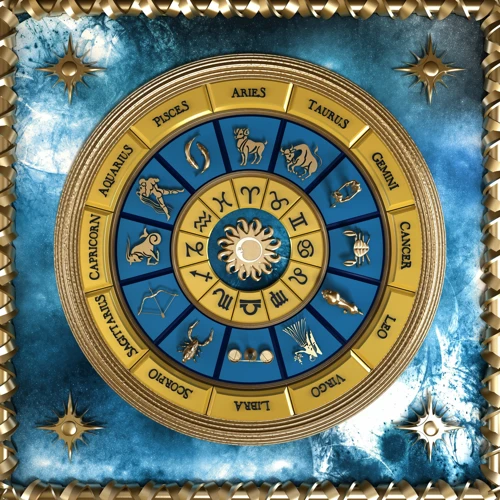
In the age of technology and personalized experiences, contemporary horoscopes have taken on a new form, captivating individuals worldwide. With the advent of the internet, horoscope readings have become easily accessible, allowing people to receive personalized insights and guidance with just a few clicks. Websites, apps, and social media platforms offer a plethora of horoscope resources, tailored to individual zodiac signs and birth charts. The impact of technology on horoscopes has made them a staple in popular culture, with horoscope predictions and compatibility analysis being sought after by people from all walks of life. Additionally, the rise of personalized horoscope readings has gained popularity, as individuals seek deeper understandings of their astrological profiles and seek specific answers to their burning questions. Contemporary horoscopes continue to evolve and adapt, incorporating modern tools and methods while keeping the enchanting essence of ancient astrology alive. As we delve further into this topic, we will explore the impact of technology on horoscope culture and the popularity of personalized readings in the contemporary era.
The Impact of Technology
Technology has revolutionized the world of horoscopes, bringing about significant changes in how they are accessed, interpreted, and personalized. With the advent of the internet and mobile applications, horoscope readings have become readily available at our fingertips. People no longer need to rely on newspapers or magazines for their daily horoscope, as various websites and astrology apps provide up-to-date and tailored horoscope readings. These technological advancements have also allowed for the inclusion of interactive features such as personalized birth charts and compatibility reports. The rise of social media platforms has created a space for horoscope enthusiasts to connect, share, and discuss their astrological experiences. The impact of technology is not limited to the accessibility of horoscopes; it has also influenced their interpretation. Advanced algorithms and data analytics enable astrologers to analyze vast amounts of astrological data and provide more detailed and accurate readings. Artificial intelligence-powered chatbots are even being developed to offer automated horoscope readings, although they may lack the human touch and intuitive understanding. Technology has made horoscopes more accessible, personalized, and data-driven, transforming the way people engage with astrology and seek guidance from the celestial realm.
Source: Unsplash – Jennifer Baer
The Popularity of Personalized Horoscope Readings
In recent times, personalized horoscope readings have surged in popularity, captivating people across the globe. With the advent of technology and easy access to information, individuals now have the ability to obtain personalized horoscopes at their fingertips. Websites and mobile applications offer detailed birth chart interpretations, daily horoscope updates, and even compatibility analyses for relationships. The rise of social media platforms has further amplified the trend, with horoscope enthusiasts sharing and discussing their zodiac signs, traits, and compatibility with others. This increased accessibility has led to a heightened interest in self-discovery and self-reflection, as people turn to astrology as a tool for gaining insights into their personalities, relationships, and life paths. Personalized horoscope readings provide individuals with a sense of guidance and affirmation, offering a chance to explore their strengths, weaknesses, and potential opportunities. As a result, more and more individuals are finding solace and meaning in the personalized horoscope readings that align with their unique astrological profiles. The allure of personalized horoscope readings lies in the belief that the celestial bodies hold secrets about our lives, and by understanding these cosmic messages, we can navigate our journeys with more clarity and purpose. So whether it is a daily dose of horoscope updates or a comprehensive birth chart analysis, the popularity of personalized horoscope readings continues to grow, captivating the minds and hearts of those seeking a deeper understanding of themselves and the world around them.
Conclusion
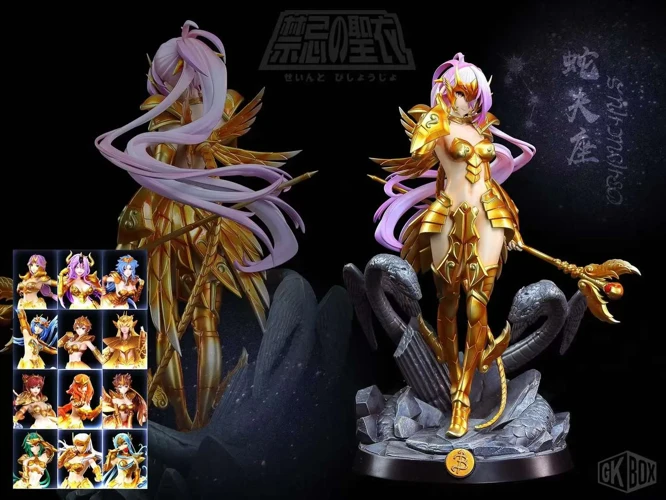
In conclusion, the evolution of horoscopes from ancient to modern times is a testament to the enduring fascination humans have with the cosmos and our place within it. Ancient horoscopes, with their roots in civilizations like Mesopotamia, Egypt, and Greece, laid the foundation for the astrological systems we know today. The influence of key figures such as Ptolemy in the medieval and Renaissance period further shaped the understanding of celestial movements and their impact on human lives. The rise of horoscope publications in the 18th to early 20th century brought astrology to the masses, making it accessible to a wider audience. With the advent of technology, horoscopes have become even more popular, with personalized readings and daily forecasts available at our fingertips. Despite the skeptics, horoscopes continue to captivate and offer guidance to many individuals. While ancient and modern horoscopes may differ in their interpretations and practices, one thing remains clear – the belief in the power of the stars to influence our lives endures. As we gaze at the night sky, we can’t help but wonder what secrets the cosmos still holds, and what stories the stars will continue to tell us in the future.
Frequently Asked Questions

What is the earliest known record of horoscopes?
The earliest known record of horoscopes dates back to ancient Mesopotamia, around the 2nd millennium BCE.
Were horoscopes a part of religious practices in ancient civilizations?
Yes, horoscopes were closely intertwined with religious practices in ancient civilizations, such as Egypt, where they were considered a way to align with the cosmic forces and divine will.
Did all ancient civilizations have their own unique astrological systems?
Yes, each ancient civilization developed its own astrological system, incorporating their cultural beliefs and symbolism. This led to variations in zodiac signs and interpretations.
Who was Ptolemy and how did he influence astrology?
Ptolemy was an influential astronomer and astrologer in ancient Greece. His work, “Tetrabiblos,” became a fundamental astrological text, further shaping the understanding and practice of astrology.
When did horoscope publications become popular?
Horoscope publications gained popularity in the 18th century, with the invention of the printing press. This allowed for the mass distribution of astrological predictions and insights.
How were modern zodiac signs established?
Modern zodiac signs were established through a combination of ancient traditions and astronomical observations. The Babylonians and Greeks played significant roles in developing the zodiac as we know it today.
How has technology impacted contemporary horoscopes?
Technology has revolutionized contemporary horoscopes, making them easily accessible through online platforms, mobile applications, and social media. It has also allowed for more personalized and interactive readings.
Why are personalized horoscope readings popular?
Personalized horoscope readings provide individuals with tailored insights and guidance based on their birth chart. This level of personalization resonates with many people, making it a popular choice.
Can horoscopes accurately predict the future?
While horoscopes can offer insights and potential tendencies, they cannot accurately predict the future with certainty. Astrology is a complex system that takes multiple factors into account, and personal choice and circumstances also play a significant role in shaping our lives.
What are some common misconceptions about horoscopes?
One common misconception is that horoscopes solely determine our destinies. In reality, they serve as tools for self-reflection and guidance, offering possibilities and insights rather than definitive outcomes.
References
- Did You Know? The Influence of Astrology on the Science …
- The Origin of Zodiac Signs Symbols
- When The Babylonians Invented The Horoscope
Frequently Asked Questions

What is the purpose of horoscopes?
The purpose of horoscopes is to provide insights, predictions, and guidance into various aspects of life, such as love, career, and personal growth, based on astrological beliefs.
Can horoscopes accurately predict the future?
While horoscopes are not scientifically proven to predict the future with absolute certainty, many people find value and entertainment in them as they offer a general overview of potential trends and energies that may affect their lives.
How do ancient civilizations contribute to the evolution of horoscopes?
Ancient civilizations, such as the Mesopotamians and Egyptians, played a significant role in developing the foundations of astrology and horoscopes. They observed celestial patterns and interpreted their influence on human lives.
Who was Ptolemy and why was he influential in horoscope development?
Ptolemy was an influential astronomer and astrologer in Ancient Greece. His work, “Tetrabiblos,” established the basis for Western astrology, including the classification of zodiac signs and the interpretation of planetary movements.
What led to the rise of horoscope publications in the 18th century?
The increasing accessibility of printing technology and growing interest in astrology among the general public led to the rise of horoscope publications during the 18th century. People sought guidance and entertainment through printed horoscopes in newspapers and magazines.
How were modern zodiac signs born?
The modern zodiac signs were born from the ancient concept of dividing the celestial sphere into twelve equal parts. These signs are based on the position of the Sun at the time of the individual’s birth, and they gained popularity during the 20th century.
What impact has technology had on contemporary horoscopes?
Technology has significantly impacted contemporary horoscopes by making them easily accessible through online platforms, mobile apps, and social media. This has increased their reach and allowed for personalization and customization based on individual birth details.
Why are personalized horoscope readings trending?
Personalized horoscope readings have become popular because they provide tailored insights and predictions based on an individual’s specific birth details. People enjoy the sense of uniqueness and relevance that comes from personalized readings.
Is there a scientific basis for horoscopes?
Horoscopes are based on astrological beliefs, which are not scientifically proven. While some aspects of astrology may overlap with astronomy, the scientific community generally does not endorse horoscopes as accurate predictors of human behavior or events.
Can horoscopes be used as a tool for self-reflection?
Yes, horoscopes can be used as a tool for self-reflection. By reading and contemplating the insights and guidance offered, individuals may gain a new perspective on their lives, behaviors, and choices, encouraging personal growth and self-awareness.







